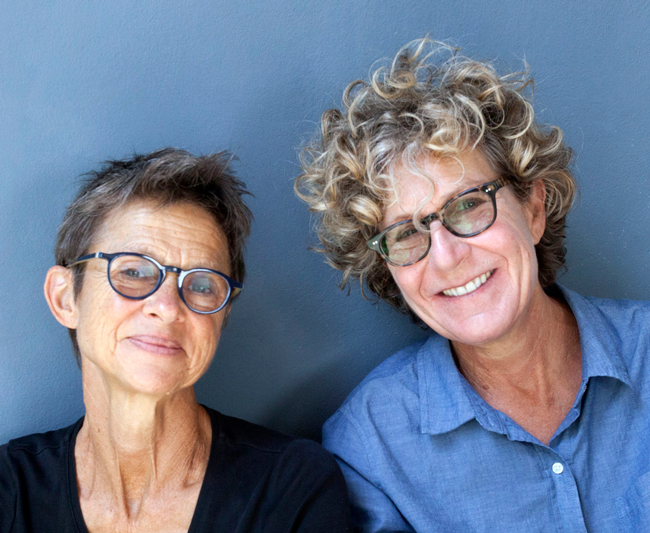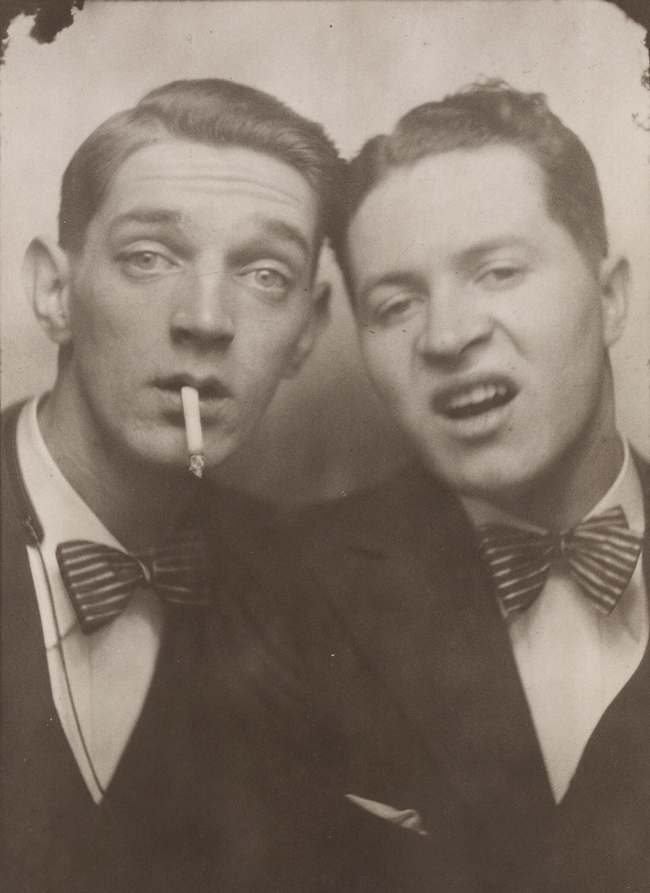
Couple Collaborative
Barbara Levine and Paige Ramey’s MFAH collection includes over a century’s worth of LGBTQ images.

Vernacular photography, defined as functional photography (as opposed to fine-art photography), is a term first coined in 1964 by John Szarkowski, director of photography at New York’s Museum of Modern Art. It can include anything from personal snapshots to mass-produced souvenirs, mugshots, and everything in between.
The Museum of Fine Arts, Houston (MFAH) is home to an excellent collection of vintage vernacular photographs that includes a significant number of LGBTQ images.
“We acquired an incredible collection of vernacular photographs formed over the course of 30 years by Barbara Levine and Paige Ramey,” says Lisa Volpe, MFAH’s associate curator of photography. “The collection they built, which MFAH now owns, is spectacular and unique. As lesbians, they felt strongly about including rarely seen images of women, and collected hundreds of images of LGBTQ life. Many of these images were made long before coming out was commonplace. They demonstrate the freedom many people felt in front of the camera that they did not feel out in the world. This perspective makes their collection entirely unique in the world of photography.”

Levine and Ramey are a married couple who live and work in both Houston and in the charming Mexican town of San Miguel de Allende. Both are artists and collectors who were introduced by mutual friends three decades ago. Levine considers her collecting to be her art form, but both she and Ramey are also collage artists and have published books such as Finding Frida Kalho and People Kissing: A Century of Photographs. They also organize art exhibits for Cherryhurst House, the private Montrose home of Dallas McNamara that functions as an art salon hosting exhibitions, performances, and artists in residence. Their collaborative art and curatorial projects can be seen on their website at projectb.com.
The couple spent decades roaming through junk shops and antique stores to find photographic pieces ranging from postcards to family photos from the 1880s to the 1970s. The MFAH bought the 5,000-piece collection with funds from the Caroline Wiess Law Accessions Endowment Fund, and highlighted the photographs in a 2020 exhibit entitled Photo-Mania: The Levine Ramey Collection of Vernacular Photography.
“We are fascinated with photography and the significance of it in our daily lives,” says Levine. “The photographs and objects in the collection are inspired by our ongoing interest in the intersections of fine art, vernacular imagery, social history, women’s history, queer and popular culture—with the unavoidable telling of personal stories.”

MFAH describes the collection as encompassing more than just vintage photos of LGBTQ life: “Its major themes [include] African American studio portraits; Mexico and the border; altered and manipulated images; gun culture; science and industry; and sideshow stars and superheroes. Although many items in the collection were originally mass-produced for the public, they have become extremely scarce over time and cannot be found in any other private or public collection. Without vernacular photography and diligent collectors like Levine and Ramey, the story of the history of photography would be incomplete.”
The Phot-Mania exhibit includes a fascinating gelatin silver print from the late 1800s showing suffragettes drinking and smoking with alligators. The viewer can’t help but wonder what their lives were like. Also featured is an early 19th-century photo of one of P. T. Barnum’s “Circassian” harem girls, Zoe Zobedia, a moss-haired snake charmer.
“We are thrilled the collection has found its permanent home at the MFAH,” says Levine. “The museum shares our commitment to telling an inclusive history of photography. Images and objects from our collection will be side-by-side with great examples of fine-art photography, inviting the public into a visual dialogue intended to tell the layered story of photography’s history.”

Photos from the collection can always be viewed at the museum, or you can view the collection in full online at emuseum.mfah.org/groups/levine-ramey-collection/results.
“We always include examples from the collection in our second-floor Kinder Gallery,” says Volpe. “Currently, there are more than 20 works from the Levine Ramey Collection on our Portrait Wall. Our next rotation will feature items from throughout the collection. And our Anne Wilkes Tucker Photography Study Center is open to anyone! In that space, visitors can request to see anything from the collection that is not currently on view, including the Levine Ramey Collection. Advance appointments are encouraged, so that we can pull things safely for our guests.”
This is a must-see photographic history of queer life that you won’t want to miss.
For more info, visit mfah.org.
This article appears in the October 2021 edition of OutSmart magazine.











Comments